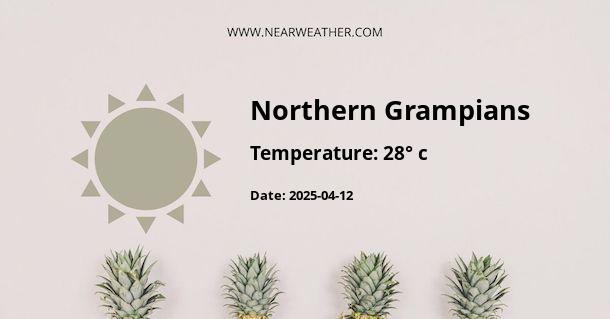Climate and Weather in Northern Grampians, AU
Northern Grampians is located in the Australian state of Victoria. The region experiences a diverse climate that includes warm summers, cool winters, and variable rainfall throughout the year. Understanding the climate and weather patterns in Northern Grampians is essential for residents, visitors, and businesses operating in the area.
Annual Weather Overview
The climate in the Northern Grampians region can be classified as temperate, with distinct four seasons. The summers are warm to hot, while the winters are cool to cold. The area experiences a Mediterranean climate with relatively dry summers and wetter winters.
Summer
During the summer months (December to February), Northern Grampians experiences warm to hot weather. The average maximum temperature ranges from 25°C to 30°C during this period. However, temperatures can occasionally exceed 40°C during heatwaves.
The region experiences some rainfall during the summer months, with occasional thunderstorms bringing short bursts of heavy rain. The humidity levels can be relatively high, especially during periods of rainfall.
Autumn
Autumn (March to May) sees a gradual decline in temperatures. Average maximum temperatures range from 18°C to 25°C during this season. The weather can be quite pleasant, with mild days and cool evenings.
Rainfall during autumn is moderate, and the region experiences more settled weather compared to summer. However, occasional cold fronts can still bring periods of wind and rain.
Winter
Winters in Northern Grampians (June to August) are characterized by cool to cold temperatures. The average maximum temperatures range from 10°C to 15°C, with overnight lows often dropping to single digits. Frost can occur during the winter months.
The region experiences more consistent rainfall during winter, with occasional heavy showers and prolonged periods of drizzle. Cold fronts from the Southern Ocean can bring gusty winds and inclement weather.
Spring
Spring (September to November) marks the transition from winter to summer. Average maximum temperatures range from 15°C to 25°C during this season. The weather becomes progressively warmer as the season progresses, with increasingly longer daylight hours.
Spring rainfall is variable, with the possibility of sporadic heavy showers and thunderstorms. The region experiences an increase in sunshine hours as it approaches the summer season.
Annual Climate Data
Understanding the average climate data for Northern Grampians provides valuable insight into the weather patterns and trends throughout the year. The following table outlines the average monthly temperatures and rainfall for the region:
| Month | Average Maximum Temperature (°C) | Average Minimum Temperature (°C) | Rainfall (mm) |
|---|---|---|---|
| January | 28 | 13 | 28 |
| February | 28 | 13 | 30 |
| March | 26 | 11 | 32 |
| April | 22 | 8 | 46 |
| May | 18 | 6 | 56 |
| June | 14 | 4 | 67 |
| July | 13 | 3 | 72 |
| August | 15 | 4 | 67 |
| September | 18 | 6 | 58 |
| October | 21 | 8 | 45 |
| November | 24 | 10 | 36 |
| December | 26 | 12 | 30 |
As indicated by the data, the summer months experience warmer temperatures and lower rainfall, while the winter months see cooler temperatures and higher rainfall. This information is valuable for individuals and businesses planning outdoor activities, agricultural operations, or tourism ventures in the region.
Extreme Weather Events
Northern Grampians, like many regions, is susceptible to extreme weather events such as heatwaves, bushfires, and heavy rainfall. Understanding the potential for these events is crucial for preparedness and risk management.
Heatwaves can occur during the summer months, with consecutive days of high temperatures posing health risks to the community. Bushfires are a significant concern during hot and dry periods, necessitating a robust fire management strategy.
Heavy rainfall, particularly during thunderstorms or prolonged periods of rain, can lead to localized flooding and disruptions to transport and infrastructure. Being aware of the potential for extreme weather events allows for proactive measures to mitigate their impact.
Conclusion
The climate and weather in Northern Grampians exhibit distinct seasonal variations, with warm summers, cool winters, and variable rainfall throughout the year. By understanding the climate patterns, average temperatures, and rainfall data, individuals and businesses can make informed decisions regarding outdoor activities, agricultural practices, and risk management strategies for extreme weather events.
Overall, the diverse climate of Northern Grampians contributes to the region's natural beauty and agricultural productivity while presenting unique challenges and opportunities for its residents and visitors.
A - Northern Grampians's Latitude is -36.849621 & Longitude is 142.873032.
A - Weather in Northern Grampians is 14° today.
A - Climate Conditions in Northern Grampians shows scattered clouds today.
A - Humidity in Northern Grampians is 67% today.
A - Wind speed in Northern Grampians is 14.22 km/h, flowing at 254° wind direction. today.
